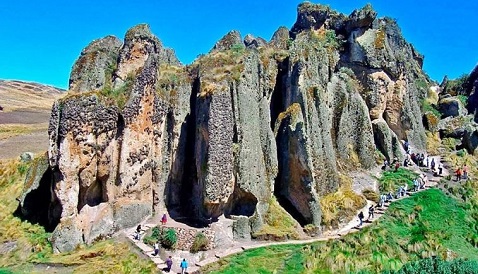The diet of prehistoric Andean populations was based on cultivated plants, not fish
The earliest complex societies developed from 3000 BCE onwards on the Central Andean coast were based on cultivated plants other than maize, and only complemented their diet with marine resources in coastal site, thus refuting previous studies that claimed that the region based its economy on marine resources.

A recent study by ICTA-UAB researchers Luis Pezo-Lanfranco and André Carlo Colonese, published in the scientific journal Scientific Report, shows that maize did not become a staple food for these populations until 2,500 years later.
Since the 1960s, the scientific community has widely discussed the economic basis of the first stratified societies along the Central Andean coast, possibly the birthplace of Andean civilization. Pioneer archaeological works in the 1970s argued that the complex societies that built the earliest monumental architecture of the region (3000-1800 BCE) were based on a marine economy.
However, in recent years, several long-term archaeological projects have produced important discoveries about the importance of plants in the daily life of these peoples and have challenged this hypothesis. Current evidence suggests that these communities were based on mixed diets that combined cultivated plants and fish in unknown proportions, but stable isotopes values, markers that can aid to identify the dietary components directly extracted from individuals’ bone collagen, have never been compared to assess this issue at regional level.
This work reanalyses the available stable isotope values (δ15Ncollagen, δ13Ccollagen, δ13Capatite) of 572 human individuals from 39 archaeological sites in the Central Andes dated between 7000 BCE and 200 CE.
The main contribution of the research is that it reconstructs the dietary composition of each population in probabilistic terms using Bayesian models and puts all these data on the same scale to provide reliable comparisons on the dependence on fish, terrestrial fauna and plants.
The results reveal that fish, terrestrial fauna and cultivated plants contributed variably to the diet of prehistoric Andean populations, but most importantly, in coastal and mid-valley settlements, plant cultivation, rather than fishing, provided more calories to the inhabitants' diet. The results also show that maize, which is considered one of the most important plants in the prehistory of the Americas, especially in later periods of the Central Andes such as the Tiwanaku-Wari and Inca Empires, only became a staple food (> 25% contribution to the diet) around 500 BCE.
Thus, the work demonstrates that the development of early complex societies during the Formative Period (from 3000 BCE) was fueled by plant cultivation other than maize and only complemented by marine resources in coastal sites.
Article reference
Pezo-Lanfranco, L., Colonese, A.C. The role of farming and fishing in the rise of social complexity in the Central Andes: a stable isotope perspective. Sci Rep 14, 4582 (2024). https://doi.org/10.1038/s41598-024-55436-4